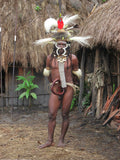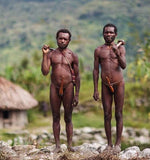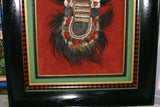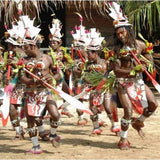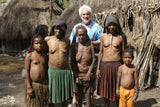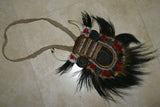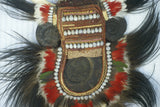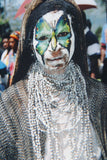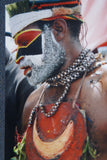Rare Body Art : Dani “Big Man” Pectoral Trophy, Bride Price, Currency, Feud Payment, Highly Collectible: Ammonite, Boar Tusks, Cassowary, Seed beads, Bark Twine etc… Custom framed, 28” x 24 ½”, Collected in the late 1900’s. Museum Quality, New Guinea.
Framed rare museum collectible: Dani Bride Price Currency and Big Man Status Symbol: Pectoral worn during Initiations, Rites of Passage, Ceremonial Events, Funerals.
Unique Professional Framing with 4 hand-painted frames within each other
(created specifically to enhance the colorful art within).
The finished product is very large 28" x 24 1/2"
It is quite a conversation piece!
This is an amazing Dani Status Symbol, a Pectoral Adornment, Warrior Trophy from Irian Jaya, West New Guinea.
WE WILL COVER THE EXPENSIVE SHIPPING COSTS, OUT OF POCKET, FOR THE CONTINENTAL USA.
Item DF1
This important “big Man” Pectoral Trophy ornament used as currency, worth, bride price exchanges and as payment during feuds, consists of 3 ancient ammonites, 2 large boar tusks, dingo teeth, surrounded by Lory, Parrot & cassowary feathers, seed beads and a hand twisted and woven bark twine band.
Collected in the field from a village chief. Baliem Valley
Such scarce South pacific art creations were highly valued by Dani warriors, chiefs and clans, they wore such pectoral decorations with pride during special ceremonies and it was a wealth object as well, worn by men of courage and rank.
I saw one once on the internet selling by itself for 950.00 dollars. Never saw another one since.
This important Warrior Ornament is so beautiful that I decided to frame it professionally and created 4 frames specifically for it, the frames fit into each other and are all hand painted with colors seen on the pectoral chest trophy, such as gold, black, red and green.
It represents a horned protective ancestor warrior with 2 ammonites for eyes, a deterrent when worn, from evil spirits lurking in the woods.
The outside frame is solid oak and you still see a gorgeous grain thru the black finish.
The back red mat has a very rich suede finish that enhances the pectoral.
There are 3 other frames within each other between the large black frame and the red mat.
We used vintage frames from our gallery to respect the age of the necklace so please inspect carefully to be satisfied as photos speak louder than words.
The tribes of PNG have lived in isolation for centuries due to the remoteness of their land and its difficult access. Their dress code has remained primitive for centuries. Traditionally, the men wear no other clothing apart from a penis sheath made of a cultivated gourd and known locally as a “horim” and some simple ornamentation such as string hair nets, bird of paradise feathers and necklaces with boar tusks or cowrie shells. In the upper canines of the boar are knocked out leaving the lower tusks to grow without being worn down by contact with the upper tusks. The pigs are never killed except for feasts or as part of a special ceremony. The tusks were used in pairs in single necklaces or in large necklaces consisting of 20 or more tusks. The necklaces and individual tusks were used to purchase land and also as bride price, blood money, ransom, and admission to men’s clubs and secret societies.
Shell, teeth, bone, wood, and natural fiber binding, all crafted with great care, are the raw materials of most Oceanic jewelry. Brightness and shininess were greatly admired, and rarity, as with whale teeth among Polynesians or shell in the highlands of PNG , enabled particular objects to connote wealth, prestige, and power.
Adornment among the highland people of New Guinea, is among the most colorful and spectacular in the world , particularly during festivals, where it reflects the strength and pride of the various groups of the region.
Artistic expression in the region is conveyed largely through body art.
Diverse in both media and application, the major components of Highlands body ornamentation as we mentioned above include bird of paradise plumes, body paint, and an enormous variety of decorative objects made from shell, teeth, beetles, orchid stem, fur, bone, bark, moss, wood, and fiber.
Moriarty recognized the importance of this art and its central position in the broader context of art. A visionary in any age, he not only developed a unique collection of body decorations from the Highlands of New Guinea collected between 1850 and 1880, but saw to it that this collection remained intact by donating it to the AGNSW. Today it is part of what is possibly the world's most important accumulation of this art.













































